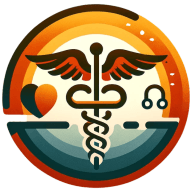In the ever-evolving world of healthcare, efficiency and patient satisfaction are paramount. One tool that is revolutionizing the industry is patient appointment scheduling software. This blog post will delve into the intricacies of this software, its benefits, and how it is transforming healthcare operations.
Understanding Patient Appointment Scheduling Software
Patient appointment scheduling software is a digital tool that automates the process of scheduling patient appointments. It eliminates the need for manual scheduling, which can be time-consuming and prone to errors.
The software allows patients to book, reschedule, or cancel appointments at their convenience. It also sends automated reminders to patients about their upcoming appointments, reducing the chances of no-shows.
Healthcare providers can also use the software to manage their schedules efficiently. They can view their appointments for the day, week, or month at a glance. This helps them plan their time better and serve more patients.
The software also integrates with other systems in the healthcare facility, such as electronic health records (EHRs) and billing systems. This ensures a seamless flow of information and improves overall efficiency.
The Benefits of Patient Appointment Scheduling Software
Patient appointment scheduling software offers numerous benefits to both healthcare providers and patients.
For healthcare providers, the software saves time and reduces administrative workload. It eliminates the need for staff to spend hours on the phone scheduling appointments. This frees up their time to focus on more critical tasks.
The software also improves patient satisfaction. Patients appreciate the convenience of being able to book appointments at any time and from anywhere. They no longer have to wait on hold or call during office hours to schedule an appointment.
The software also reduces no-shows, which can be costly for healthcare providers. Automated reminders ensure that patients remember their appointments. If a patient cancels an appointment, the software can automatically fill the slot with another patient.
Choosing the Right Patient Appointment Scheduling Software
When choosing patient appointment scheduling software, healthcare providers should consider several factors.
The software should be easy to use for both staff and patients. It should have a user-friendly interface and intuitive navigation.
The software should also be customizable to fit the unique needs of the healthcare facility. It should allow providers to set their availability, block off time for breaks or meetings, and specify the types of appointments they offer.
Integration with other systems is another crucial factor. The software should integrate seamlessly with EHRs, billing systems, and other software used in the facility.
Finally, the software should offer robust reporting features. It should provide insights into appointment trends, no-show rates, and other key metrics. This can help providers improve their scheduling processes and patient satisfaction.
Implementing Patient Appointment Scheduling Software
Implementing patient appointment scheduling software requires careful planning and execution.
First, healthcare providers should identify their needs and goals. They should consider their current scheduling challenges and how the software can address them.
Next, providers should choose the right software based on the factors discussed in the previous section. They should also consider the cost of the software and the return on investment it offers.
Once the software is chosen, providers should plan the implementation process. This includes training staff on how to use the software and integrating it with other systems.
Providers should also communicate with patients about the new software. They should explain how it works and how it will benefit them.
Finally, providers should monitor the software's performance and make adjustments as needed. They should also seek feedback from staff and patients to continually improve the scheduling process.
The Future of Patient Appointment Scheduling Software
The future of patient appointment scheduling software looks promising.
With advancements in technology, the software is becoming more sophisticated. It can now predict appointment no-shows based on patient behavior, allowing providers to take proactive measures.
The software is also becoming more integrated. It can sync with wearable devices to remind patients of their appointments. It can also integrate with virtual care platforms, enabling patients to schedule telehealth appointments.
Artificial intelligence (AI) is another exciting development in patient appointment scheduling software. AI can analyze data to optimize appointment scheduling. For example, it can identify patterns in patient no-shows and suggest changes to reduce them.
As technology continues to evolve, patient appointment scheduling software will continue to transform healthcare operations. It will make scheduling more efficient, improve patient satisfaction, and ultimately, enhance the quality of care.
Conclusion
Patient appointment scheduling software is a powerful tool that is revolutionizing healthcare. It offers numerous benefits, including time savings, improved patient satisfaction, and reduced no-shows.
Choosing the right software and implementing it effectively is key to reaping these benefits. As technology advances, the software will continue to evolve, offering even more possibilities for improving healthcare operations.
Embracing the Revolution: Patient Appointment Scheduling Software
In conclusion, patient appointment scheduling software is not just a trend, but a necessity in today's fast-paced healthcare environment. It streamlines the appointment scheduling process, enhances patient satisfaction, and allows healthcare providers to focus more on patient care. As we move forward, we can expect this software to become even more integral to healthcare operations, driven by advancements in technology and a growing emphasis on patient-centered care.

